
Proposte di tesi di laurea magistrale
Search for the lepton flavor violating decay tau to three muons with the CMS detector
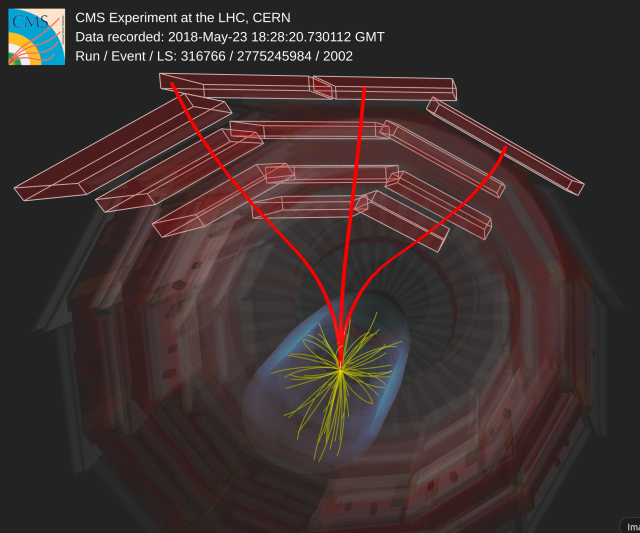
The study of rare processes is a way to probe the existence of physics beyond the Standard Model (SM). In the Standard Model with massless neutrinos, the three lepton flavor numbers are exactly conserved. The observation of neutrino oscillations anyway provides a mechanism, through neutrino loops, for lepton flavor violating decays of charged leptons such as tau->3mu. While in the SM this process has an extraordinarily small branching fraction, several SM extensions predict a much larger branching fraction, with values accessible to current experiments.
This thesis aims at searching for the tau->3mu decay using the data collected by the CMS experiment at LHC during Run3, exploiting tau production mechanisms never considered before for this search. The student will join the CMS team involved in this search. He/she will perform a real data analysis, which includes the development and implementation of advanced Machine Learning techniques to boost the search sensitivity.
References
- “Search for the lepton flavor violating τ→ 3μ decay in proton-proton collisions at √s = 13 TeV”, CMS Collaboration, Physics Letters B (2024) Volume 853, 138633
- “Flavor violating leptonic decays of τ and μ leptons in the Standard Model with massive neutrinos”, G. Hernández-Tomé, G. López Castro, P. Roig, Eur. Phys. J. C (2019) 79:84 Eur. Phys. J. C (2020) 80: 438
Contacts
Keywords: CMS, Rare decays, Data Analysis, Machine Learning
Indirect search for new physics through flavour studies with the CMS detector

The unprecedented size of the Run2 and Run3 datasets collected by the CMS experiment gives an opportunity to study very rare decays of heavy quarks.
Rare decays are suppressed in the Standard Model, making them intriguing avenues for exploring new physics beyond the current theoretical framework.
Many new physics models could potentially emerge from the study of these decays, providing the insights how the Standard Model could be extended.
With this thesis project the student will join the analysis team working on one of such rare signatures. He/she will perform
a real data analysis, exployting new experimental techniques and advanced Machine Learning algorithms.
References
- “Observation of the of the 𝐽/𝜓 →𝜇𝜇𝜇𝜇 decay in proton-proton collisions at √𝑠 =13 TeV”, CMS Collaboration, Phys. Rev. D 109, L111101
- “Angular analysis of the B0 → K∗(892)0μ+μ− decay in proton-proton collisions at s√ = 13 TeV”, CMS Collaboration, Submitted to Physics Letters B (2024)
Contacts
Keywords: CMS, Rare decays, Data Analysis, Machine Learning
Study of the Higgs boson properties in the ZZ and gammagamma decay channels
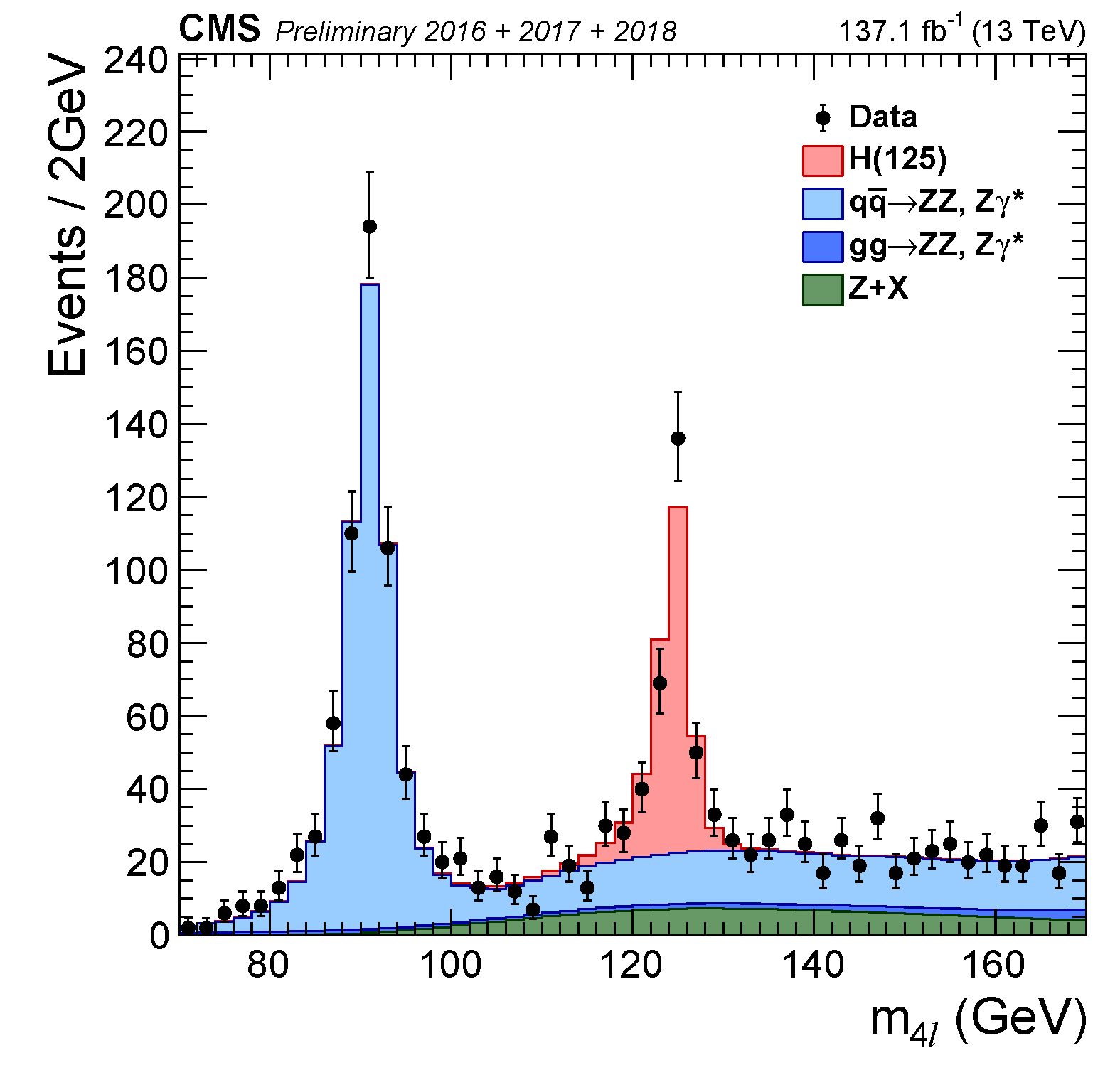
The discovery of a new particle, in the mass region around 125 GeV consistent with the Higgs boson predicted by the Standard Model, was announced by the CMS experiment on the 4th July in 2012 at the Large Hadron Collider.
Two of the main discovery channels were H→ZZ→4 leptons and H→gammagamma. They are defined as golden channels thanks to the complete reconstructed final state and very good momentum resolution. These processes have been deeply used to study Higgs boson properties looking for possible contributions beyond the Standard Model.
The student, profiting of these channels, will perform real data analysis, which includes the development and implementation of advanced Machine Learning techniques to measure these properties and squeeze the analysis sensitivity, using data collected by CMS detector during not only Run 2 but also Run 3, at the new LHC energy of 13.6 TeV.
References
- "Measurements of production cross sections of the Higgs boson in the four-lepton final state in proton-proton collisions at √s = 13 TeV", CMS Collaboration, Eur. Phys. J. C 81 (2021) 488
- “Differential cross section measurements in the Higgs boson to four-lepton decay channel in proton-proton collisions at √s =13 TeV”, CMS Collaboration, CMS-PAS-HIG-21-009
- “Projection of the Higgs boson mass and on-shell width measurements in H→ZZ→4ℓ decay channel at the HL-LHC”, CMS Collaboration, CMS-PAS-FTR-21-007
Contacts
Keywords: CMS, Higgs Boson, Data Analysis, Machine Learning
Non-Resonant Higgs Pair Production at the LHC: Probing the Higgs Potential and Beyond the Standard Model

The non-resonant production of Higgs boson pairs at the LHC provides a crucial opportunity to explore the dynamics of electroweak symmetry breaking and in particular probe the structure of the Higgs field potential. This process, extremely rare within the Standard Model (SM), is sensitive to the Higgs self-interaction term, offering a unique pathway to determine the value of the Higgs trilinear coupling, a fundamental parameter of the SM. The thesis will focus on the analysis of pp->HH events produced via different production modes at the LHC, employing the most recent theoretical models and advanced machine learning techniques to enhance signal-to-noise discrimination, crucial for such a rare process. The final states considered will include the decay of one Higgs boson into two b-hadrons, to gain from the large Branching Ratio of this decay, and the decay of the other Higgs boson into experimentally cleaner signatures at CMS, i.e. H->gamma gamma or H->tau tau. The analysis will use data collected by the CMS experiment during the LHC Run 2 and Run 3, comparing the results with theoretical predictions and searching for deviations indicative of physics beyond the SM (BSM). The student will also have the possibility of bridging the experimental analysis with a theoretical interpretation, in the context of the Effective Field Theories (EFT) interpretation of BSM effects.
References
- “Higgs boson pair production at NNLO with top quark mass effects”, M. Grazzini, G. Heinrich, S. Jones et al., J. High Energ. Phys. 2018, 59 (2018).
- “Effective field theory descriptions of Higgs boson pair production”, CMS Collaboration, L. Alasfar et al., SciPost Phys. Comm. Rep. 2, 2024
- “A portrait of the Higgs boson by the CMS experiment ten years after the discovery”, CMS Collaboration, Nature volume 607, 60–68 (2022)
- “Combination of searches for nonresonant Higgs boson pair production in proton-proton collisions at sqrt(s)=13 TeV”, CMS Collaboration, CMS-PAS-HIG-20-011 (2024)
Contacts
Keywords: CMS, Higgs Boson, Higgs self-interaction, EFT
Studying the building blocks of QCD with jets

In particle collider experiments, elementary particle interactions with large momentum transfer produce quarks and gluons (known as partons) whose evolution is governed by the strong force, as described by the theory of quantum chromodynamics (QCD). These partons subsequently emit further partons in a process described as a parton shower, which culminates in the formation of detectable hadrons. The resulting collection of detected hadrons are then grouped by a clustering algorithm into a collection of jets. By studying the pattern of hadrons inside each jet, we can retrieve information about the initiating parton and its radiation, thus testing our understanding of QCD. Studying the pattern of the parton shower is one of the key experimental tools for testing the building blocks of QCD. Two Master thesis projects are possible:
References
- “Looking inside jets: an introduction to jet substructure and boosted-object phenomenology”, S.Marzani, G.Soyez, M.Spannowsky, Lecture Notes in Physics, volume 958 (2019)
- “PanScales project”
- “Infrared safe definition of jet flavour”, A.Banfi, G.P.Salam, G.Zanderighi, Eur.Phys.J.C47:113-124,2006
- “Infrared-safe flavoured anti-kT jets”, M. Czakon, A. Mitov, R.Poncelet, JHEP 04 (2023) 138
- “A dress of flavour to suit any jet”, R. Gauld, A. Huss, G. Stagnitto, CERN-TH-2022-121
- “Flavoured jets with exact anti-kt kinematics and tests of infrared and collinear safety”, F.Caola, R.Grabarczyk, M. L. Hutt, G. P. Salam, L. Scyboz, J. Thaler.
Contacts
Keywords: CMS, Heavy Ion Physics, Quantum Chromodynamics
Search for New Long-Lived Particles with the Future CMS Mip Timing Detector
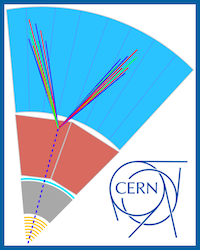
Theoretical scenarios with new long-lived particles are of great interest in direct searches for physics beyond the Standard Model at LHC. To detect unusual signatures of massive long-lived particles, non-standard algorithms and experimental techniques need to be developed. For the high luminosity phase of LHC (HL-LHC), the CMS experiment will build a new Mip Timing Detector (MTD) aimed at measuring the time-of-flight of charged particles with an excellent target resolution of 30 ps. This precise time information can be used to detect signals of new long-lived particles that travel inside the detector for a certain distance before decaying to photons, leptons or jets.
The student will develop identification algorithms to detect these long-lived particles using the novel time information from MTD and study the impact of these methods on the sensitivity to new physics processes. This research activity will contribute to increase the new physics discovery potential of the CMS experiment at HL-LHC.
References
- “Searching for long-lived particles beyond the Standard Model at the Large Hadron Collider”, J. Alimena et al., J. Phys. G: Nucl. Part. Phys. 47 090501 (2020)
- “Search for long-lived particles using delayed photons in proton-proton collisions at √s= 13 TeV”, CMS Collaboration, Phys. Rev. D 100, 112003 (2019)
- “A MIP Timing Detector for the CMS Phase-2 Upgrade” Technical Design Report; CERN-LHCC-2019-003; CMS-TDR-020
Contacts
Keywords: CMS, Exotic New Physics Signatures, Precise Timing, Multivariate Analysis Techniques
Search for Beyond the Standard Model processes at CMS
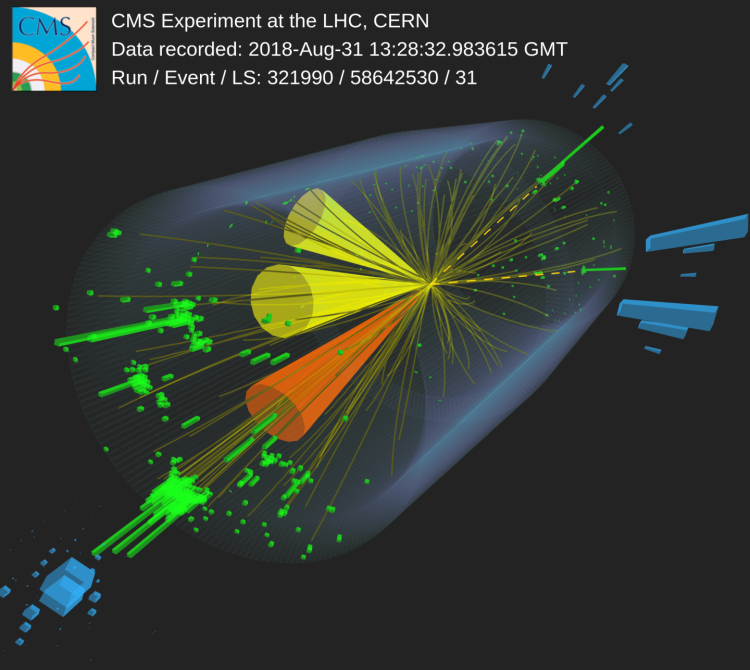
Intriguing scenarios of new physics provide explanation to several shortcomings of the Standard Model, as for example the source of parity violation in the weak sector, matter dominance of the universe or neutrino masses.
Such models usually lead to nonconventional signatures at the LHC. The latter are varied and, by nature, often very different from signals of Standard Model processes. They could include new particles with unusual properties as for example fractionally charged particles, long-lived particles decaying in the outer regions of the CMS silicon tracker or in the calorimeters or hypothetical heavy states, for instance the heavy Majorana neutrinos.
Novel experimental techniques, including creative usage of CMS sub detectors and advanced machine learning techniques can be employed to identify such signals. The huge amount of data collected by CMS during the LHC Run 2 and the very fresh Run 3 data, offer the unique opportunity to develop novel techniques.
In this thesis the student will join the efforts of an analysis team working on one of such peculiar signatures. He/She will develop unique analysis strategy and tools that could enhance the sensitivity of the search and could boost its discovery reach.
References
- “Search for long-lived particles using out-of-time trackless jets in proton-proton collisions at √s = 13 TeV”, CMS Collaboration, CMS-EXO-21-014, CERN-EP-2022-276
- “Search for fractionally charged particles in pp collisions at √s= 13 TeV”, CMS Collaboration, CMS-PAS-EXO-19-006
- “Search for resonance production in events with a photon and jet with the CMS experiment” CMS Collaboration, CMS-PAS-EXO-20-012
Contacts
Keywords: CMS, Exotic New Physics Signatures, Machine Learning Techniques
Machine Learning for Event Reconstruction at HL-LHC with the CMS Mip Timing Detector
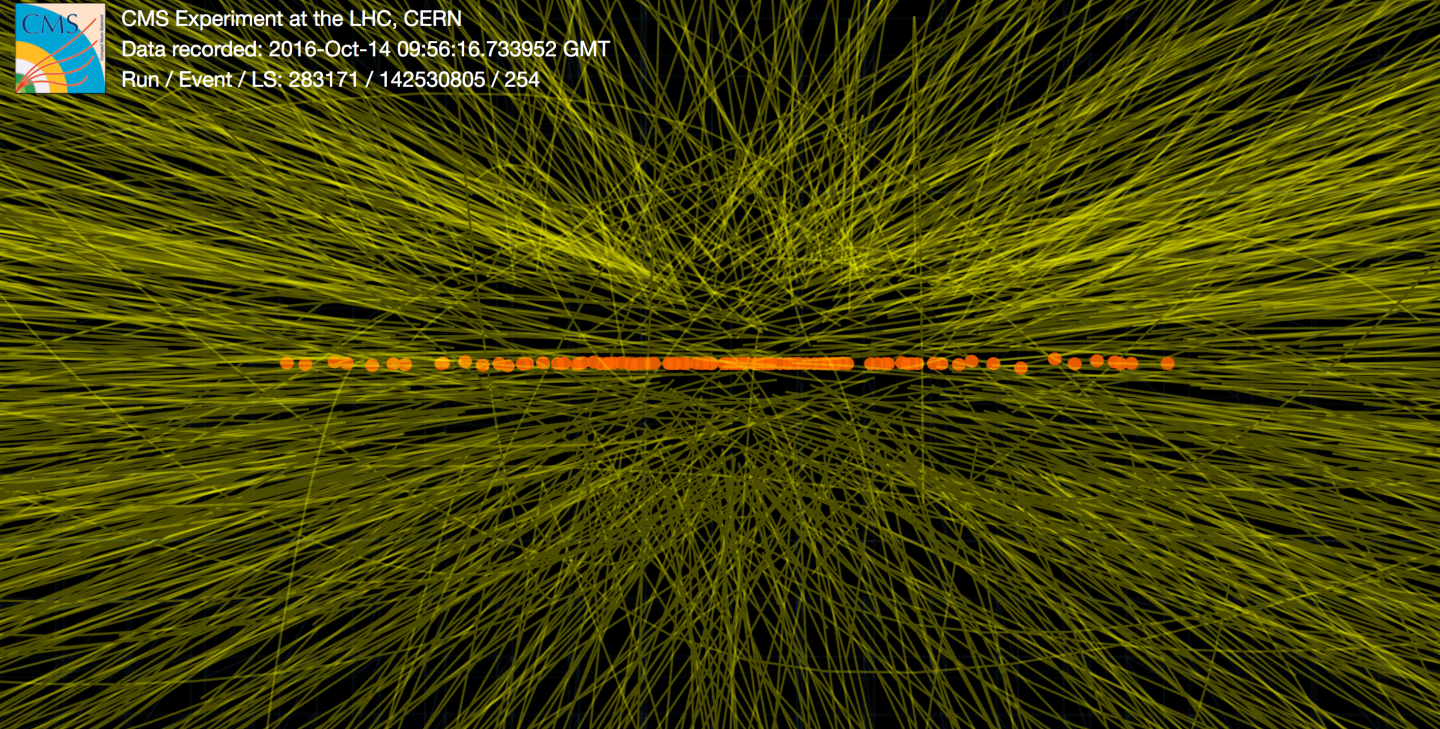
Future LHC running periods will be characterized by very hard experimental conditions, reaching in the high-luminosity phase (HL-LHC) ~200 simultaneous (pile-up) interactions per bunch-crossing. For this reason, CMS has proposed for its upgrade program a novel timing detector for charged particles (MTD) with an expected time resolution of 30ps. Time information will allow to significantly reduce the pile-up contamination, with large improvements for the event reconstruction. This upgrade will be equivalent to an increase of 20-30% of the integrated luminosity collected at the HL-LHC, with clear benefits for the physics reach of the CMS experiment.
Time informations from the new Mip Timing detector are combined with the data from inner spatial tracking detectors in order to reach a 4-dimensional event reconstruction. In this thesis, the student will develop novel and innovative machine learning algorithms that will allow to fully exploit the potential this new timing detector.
References
- “A MIP Timing Detector for the CMS Phase-2 Upgrade” Technical Design Report; CERN-LHCC-2019-003; CMS-TDR-020
Contacts
Keywords: CMS, Event Reconstruction, Machine Learning, Precise Timing Detector